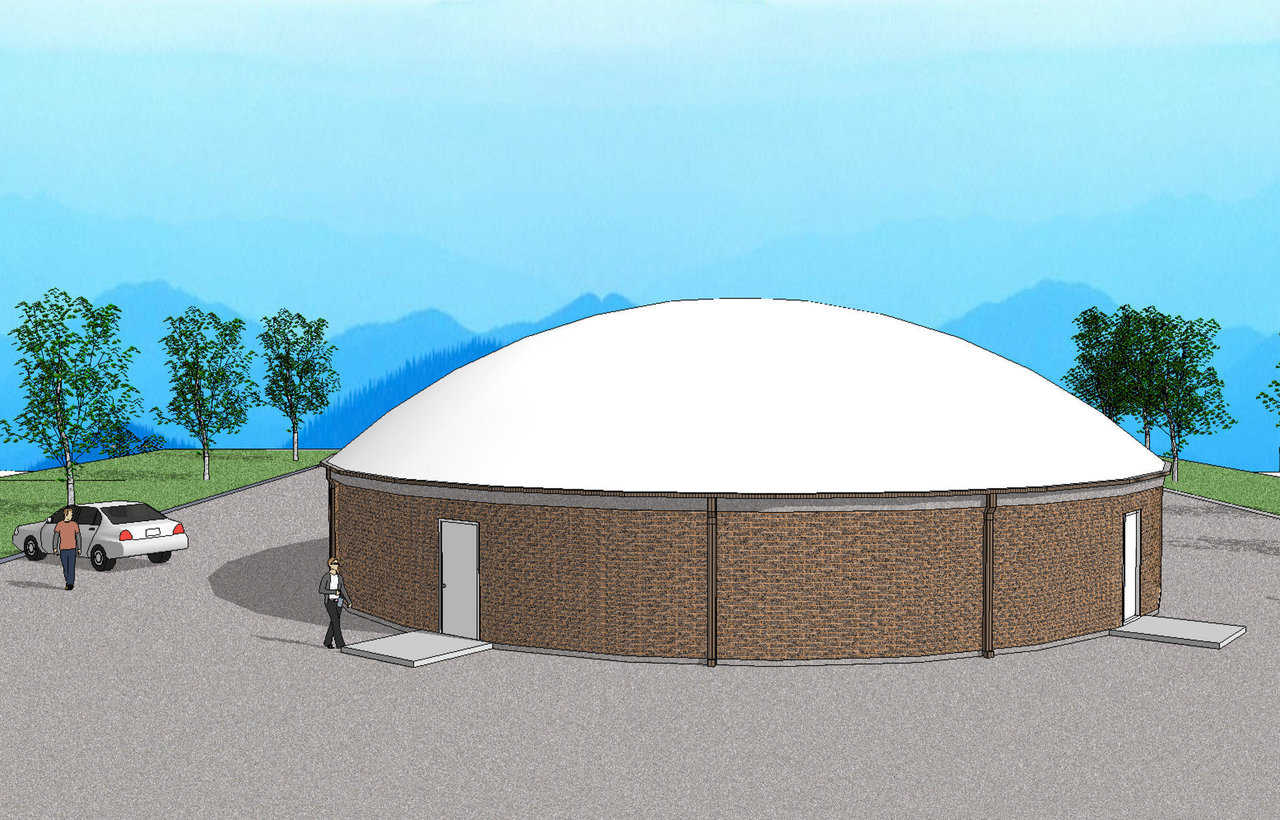FOR IMMEDIATE RELEASE
CONTACT: Carol Lanham
BWG Agency
972/818-0895
FEMA Funds First Monolithic Dome Tornado Shelter for Missouri School
New Steel-Reinforced Concrete Dome to Double as Preschool Classroom
NIANGUA, Missouri (February 27, 2009) A small Missouri school district has received funding from the Federal Emergency Management Agency (FEMA) to build a Monolithic Dome shelter that will double as a preschool classroom. The dome is the first building of its kind approved for FEMA funding.
The shelter, which will hold approximately 400 people, is being constructed for the Niangua R-V School District. The building qualified for the grant money because Monolithic Domes meet FEMA’s criteria for design and construction of community safe rooms, and also offer near-absolute protection from tornadoes and hurricanes.
“After all the federally declared disasters we have faced in Webster County in the past two years, we applied for and received a grant to build a community storm shelter in the Niangua area,” says emergency management director Bill Sexton. “The building will not only protect people during a tornado, it will also double as a classroom.”
The building will cost $311,750 to build, but ninety percent of the funding is coming from FEMA. Niangua’s pre-school students currently attend class in double-wide trailers, which have been described as tornado magnets. The new building is scheduled for completion by the end of March.
Monolithic Domes are steel-reinforced, concrete buildings that are known not only for their safety, but for their energy efficiency. A dome can cost as much as 50 percent less to heat and cool than a traditional structure of the same size. Because of the materials used in their construction, they also are fire safe.
David South, president of the Texas-based Monolithic Dome Institute, said the “green” features of the building are a big selling point. “The energy savings along will usually pay for the total cost of the structure within the first 20 years,” he said. “They also are very durable structures. Properly maintained, they will last for centuries.”
He added that every school in the nation could benefit from a dome that doubles as a tornado shelter. “Over the years, we’ve seen dozens of schools build gyms that double as community disaster shelters,” South said. “But this is the first time we’ve seen FEMA fund a Monolithic Dome classroom/tornado shelter in a community.”
Monolithic Dome schools have been built in Texas, Arizona, Missouri, Oklahoma, Florida, Idaho, and Minnesota. Several dome schools are currently under construction or about to break ground, including one in Kansas.
The construction method used to build Monolithic Domes is as unusual as the buildings themselves. The process begins with the placement of a ring beam footing and the pouring of a circular steel-reinforced concrete slab floor. In many cases, a stem wall is then erected to give the building straight walls and a more conventional look. Next, crews attach an Airform, a tarp made of tough, single-ply roofing material, which is inflated using giant fans.
Once the Airform is inflated, work moves to the interior where treated wood is attached to frame the windows and doors. Three inches of polyurethane foam is then sprayed on the rest of the Airform, and a grid of steel rebar is attached to the foam. In the final step, crews spray on a layer of Shotcrete that ranges from 4 inches at the top to 8 inches at the base. The result is a permanent and virtually indestructible structure.
For more information about Monolithic Domes schools, visit HYPERLINK http://www.monolithic.com
